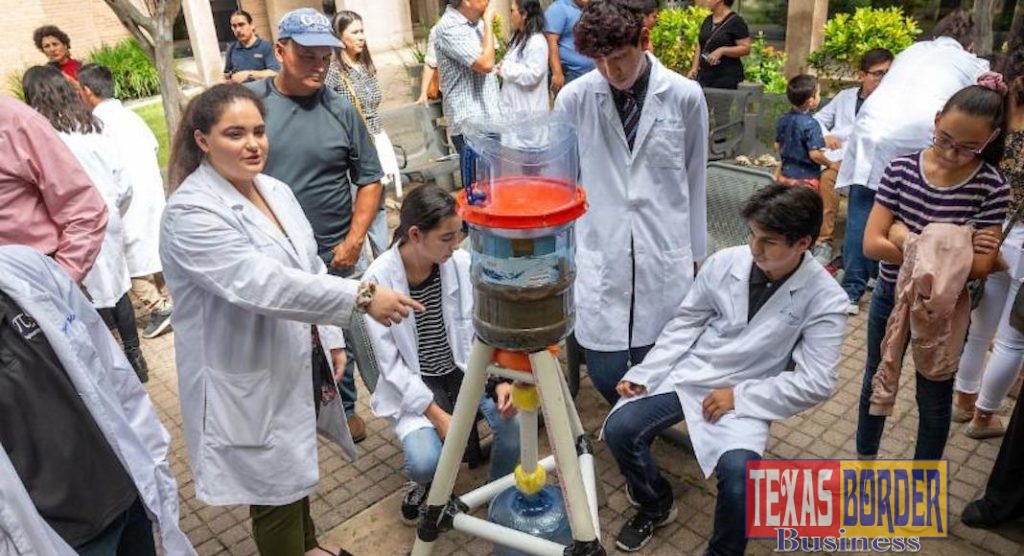
Texas Border Business
By Amanda A. Taylor
RIO GRANDE VALLEY, TEXAS – Sand, rocks,
Students in the JSTEM summer camp collaborated with STEM faculty/graduate students from UTRGV to use those materials to create life-sustaining biofilters for clean water.
And as an added incentive, they got to interact via video conference with students in Ghana who were working on a similar project.
The focus of the JSTEM camp is to help students solve a real-world, original research problem, and the goals are for students to be able to develop content and skills in specific STEM and JSTEM (Journalism, Science, Technology, Engineering & Math) disciplines.
“Students come in for six weeks,” said Angela Chapman, assistant professor of Science Education in the UTRGV Department of Teaching and Learning. “It’s meant to be project-based learning (and) interdisciplinary.”
The challenge was to create a water resource management plan for the city of Peñitas, one of many Valley cities prone to flooding. Over the course of the camp, students worked together and in groups, bouncing ideas off each other to create functional biofilter designs.
“The idea is that it’s not the faculty telling them what to do, it’s the students’ ideas. And they’re building it,” Chapman said. “And hopefully, they’re taking some expert advice to refine their idea and improve it. They have some pretty good, interesting designs that are functional and that are cleaning the water.”
The video conference, with students from the Kumasi Academy in Ghana, was made possible with the help of Chapman’s dissertation advisor, Dr. Allen Feldman, professor of Science Education at the University of South Florida.
“I reached out to him because I know they do a lot of things with authentic science and engineering, and I thought maybe he’d want to do a video conference,” Chapman said. “He said he had just returned from Ghana on an NSF (National Science Foundation) grant and that this school was doing the same project.”
The students were able to discuss and present their projects to students across the Atlantic Ocean, all from within the Education Complex on the UTRGV Edinburg Campus.
For many campers, this was the first time video conferencing with students outside of the Valley.
“I thought it was pretty cool, how you could talk to people in another country,” said Raul Gonzalez, an entering freshman at La Joya High School T-STEM Academy. “We got to see projects that are similar to ours – working with something small and making it big. I thought it was pretty cool.”
Anthony Bailey, head mentor at the camp, said it is important for students to collaborate on projects like these so they can understand real-world problems and find ways to improve them.
“We have cities such as Peñitas, parts of Edinburg and McAllen, that do flood and have extreme water contamination,” he said. “A lot of students don’t have the ability to work outside of their sphere, so when they’re able to collaborate and share their ideas, it gives a more natural environment to adjust into the scientific field.”
The JSTEM Summer Program wrapped up mid-July with presentations in which campers were able to explain their projects to their peers, friends and families.
Also, a live demonstration on each biofilter project was presented outside the Education Complex.
“By the time they leave here, they do see themselves as scientists and engineers,” Chapman said. “I see a big change, and that’s part of my own research on how we are motivating and engaging all students to be successful in STEM. As a science educator, that’s very important.”











